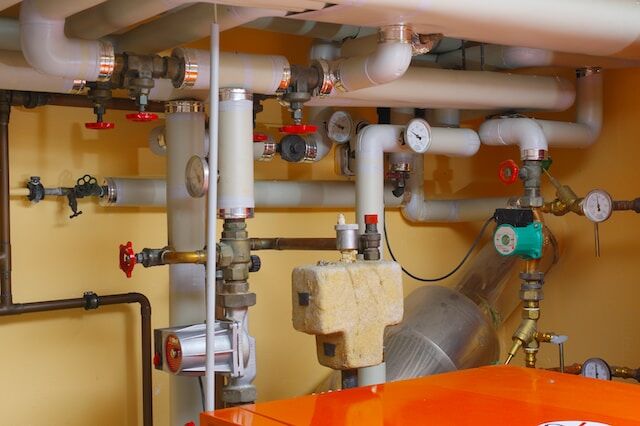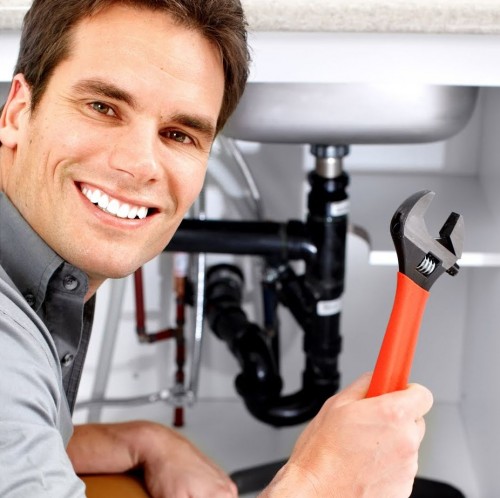Unpacking the Core Concepts of Home Plumbing: A Beginner's Overview
Unpacking the Core Concepts of Home Plumbing: A Beginner's Overview
Blog Article
Any individual has their unique theory with regards to Plumbing Basics Every Homeowner Should Know.

Plumbing is an important aspect of any type of home, responsible for supplying tidy water for drinking, food preparation, and showering, as well as getting rid of wastewater securely. Recognizing the basics of home plumbing is essential for every homeowner to make sure appropriate upkeep, troubleshooting, and, if needed, fixings. In this newbie's overview, we'll cover the fundamental principles of home plumbing to help you end up being extra familiar with how it functions.
Water System System
The water supply system brings clean water into your home from a municipal water resource or an exclusive well. It contains a main water line that connects to your home's plumbing system, usually located underground. A water meter gauges the amount of water eaten, while a shut-off shutoff allows you to regulate the circulation of water into your home.
Plumbing Components
Plumbing fixtures are devices that deliver water to numerous parts of your home and include sinks, taps, bathrooms, showers, tubs, and devices such as dishwashers and washing machines. Each component is connected to the supply of water system through pipes and installations and might have its shut-off valve for upkeep or emergencies.
Water Heating System
The water heating system is accountable for heating water for residential usage, consisting of showering, food preparation, and cleaning. Usual kinds of hot water heater consist of tank-type water heaters, tankless (on-demand) water heaters, and heat pump hot water heater. The water heater is connected to the water system system and delivers hot water to plumbing fixtures as needed.
Drainage System
The drain system eliminates wastewater from your home and carries it away to a sewer treatment center or septic tank. It includes a network of pipelines, installations, and fixtures that move wastewater from plumbing components to the major sewer line or septic tank. Proper drain is vital to protect against blockages, backups, and sewer leaks.
Air flow System
The ventilation system aids keep appropriate air pressure and stop sewage system gases from entering your home. Air vent pipes, likewise referred to as vent stacks, extend from plumbing components to the roof covering, enabling sewage system gases to leave safely outside. Air flow pipelines likewise enable air to go into the water drainage system, promoting smooth wastewater flow and protecting against suction or vacuum cleaner results.
Common Plumbing Tools
Having the right devices available is crucial for carrying out fundamental plumbing repair work and upkeep tasks. Common plumbing devices consist of adjustable wrenches, pipe wrenches, pliers, pipeline cutters, hacksaws, plungers, augers (or drain snakes), and Teflon tape. Having these tools readily available can aid you tackle small plumbing concerns successfully.
Fundamental Plumbing Repair Services
While some plumbing repairs might require specialist assistance, several typical problems can be addressed with fundamental DIY methods. Learning exactly how to take care of a dripping faucet, unblock a drainpipe, replace a bathroom flapper, or fix a dripping showerhead can conserve you time and money on plumbing repairs.
Verdict
Understanding the fundamentals of home plumbing is vital for every single home owner to maintain a secure, useful, and effective plumbing system. By acquainting on your own with the water supply system, plumbing components, drain system, ventilation system, usual plumbing tools, and standard fixings, you can with confidence deal with small plumbing problems and guarantee your home's plumbing system operates efficiently.
Plumbing for Beginners: A Comprehensive Guide
If you’re a beginner when it comes to plumbing, don’t worry; you’re not alone. Plumbing may seem intimidating, but with the right knowledge and a little practice, you can handle many common plumbing issues on your own. In this comprehensive guide, we will demystify the world of plumbing for beginners, providing you with the basic knowledge and skills needed to tackle common plumbing problems and even take on some DIY plumbing projects.
The Importance of Basic Plumbing Knowledge for Beginners:
First and foremost, basic plumbing knowledge gives you a solid foundation. It helps you grasp the key concepts and terminology that are essential in this field. By learning the basics, you’ll be able to build upon that knowledge and tackle more complex plumbing tasks in the future.
Having a basic understanding of plumbing also enables you to handle common issues that may arise in your home. Picture this: a leaky faucet or a clogged drain. With some basic plumbing knowledge, you’ll have the confidence to troubleshoot and fix these problems on your own. It saves you from unnecessary expenses and the hassle of waiting for a professional to arrive.
As a beginner, learning the basics of plumbing empowers you to take care of your own home. It gives you a sense of independence and self-reliance. You’ll no longer have to rely solely on professionals for every small issue that pops up. Instead, you can handle many tasks yourself, saving time and money in the process.
Remember, everyone starts as a beginner. Embrace the learning process and take small steps to expand your plumbing knowledge. There are plenty of online resources, tutorials, and even local workshops that talk about plumbing for beginners.
Essential Tools for Plumbing for Beginners
As you start your plumbing journey, having the right tools in your toolbox is crucial. Let’s explore some of the must-have tools:
Adjustable Wrench:
This versatile tool is a staple in any plumber’s toolbox. It allows you to tighten or loosen nuts and bolts of various sizes. Make sure to have an adjustable wrench with a comfortable grip.
Pipe Wrench:
A pipe wrench is specifically designed for gripping and turning pipes. It has serrated jaws that provide a strong grip, making it easier to loosen or tighten threaded pipes and fittings.
Plunger:
The plunger is a simple yet effective tool for clearing clogged drains and toilets. It creates suction when you push and pull, helping to dislodge blockages. Keep a good-quality plunger handy for those unexpected clogs.
Pipe Cutter:
When it comes to cutting pipes, a pipe cutter is your go-to tool. It creates clean, precise cuts without damaging the pipe. Look for a pipe cutter that can handle the pipe sizes you’re working with.
Hacksaw:
A hacksaw is useful for cutting through pipes, screws, and other materials. It’s a versatile tool that can handle different cutting tasks. Remember to use a blade suitable for cutting metal.
Tape Measure:
Accurate measurements are crucial in plumbing. A tape measure allows you to measure pipe lengths, distances, and dimensions accurately. Opt for a sturdy tape measure that extends a good length.
Pliers:
Pliers come in handy for various tasks, such as gripping, bending, and cutting. Slip-joint pliers with adjustable jaws are great for gripping pipes, nuts, and bolts.

We hope you liked our section about What to Know About Plumbing: Basics, Tips, and Insights. Many thanks for taking a few minutes to read through our piece. Please take a moment to share this article if you appreciated it. I cherish your readership.
Book Appointment Report this page